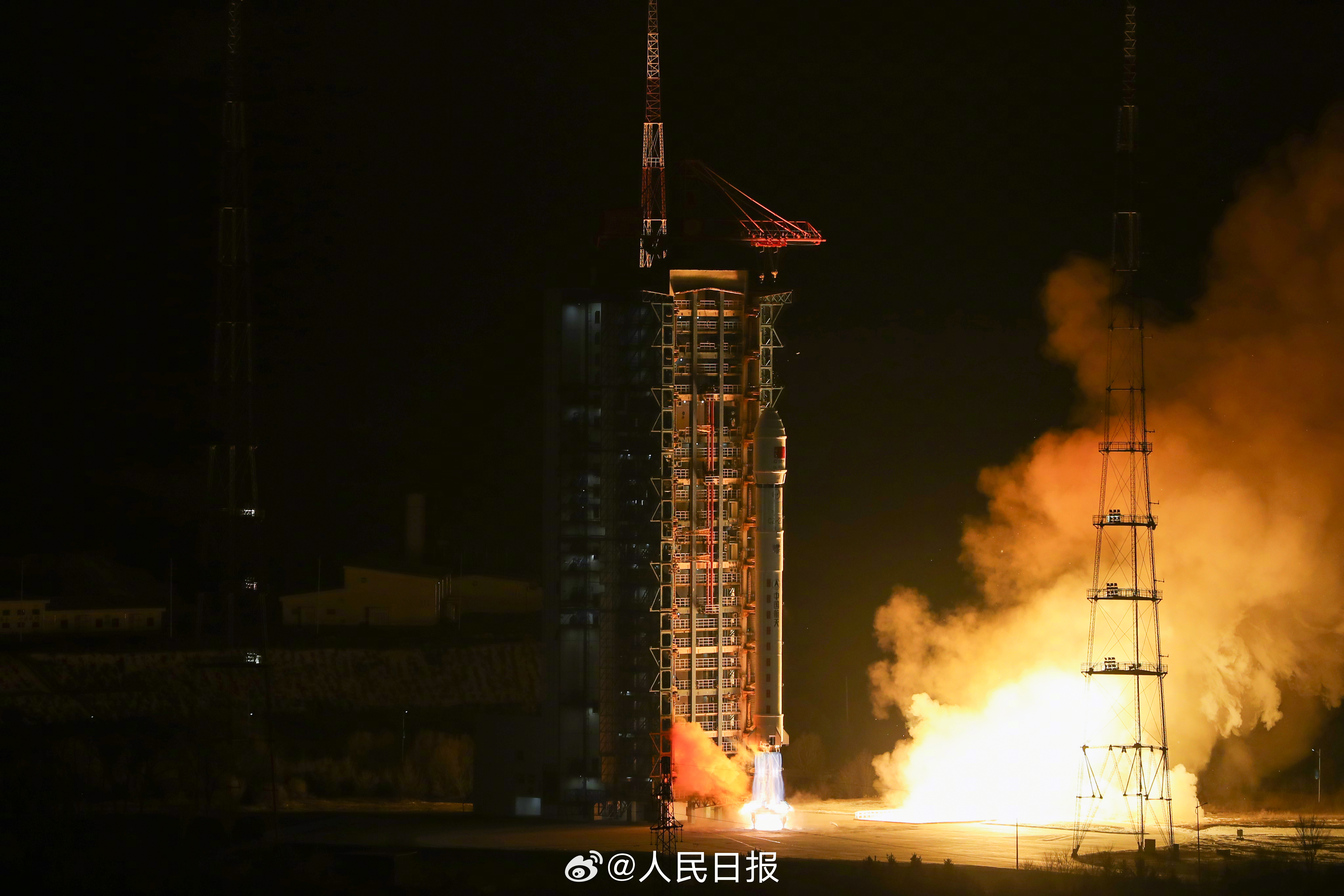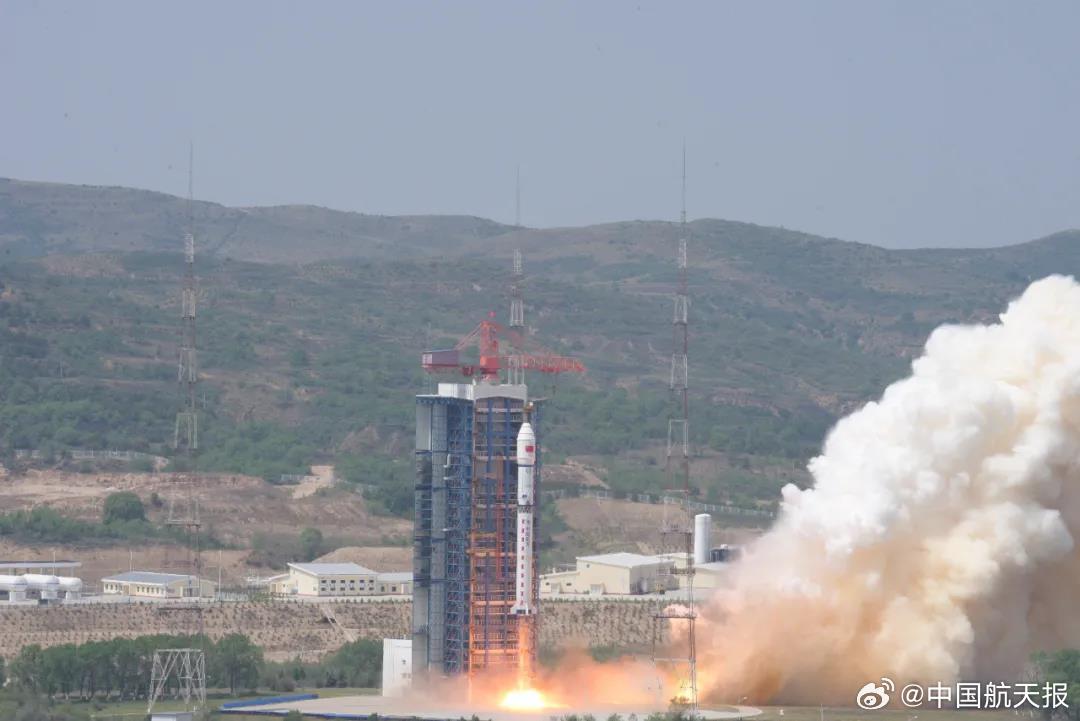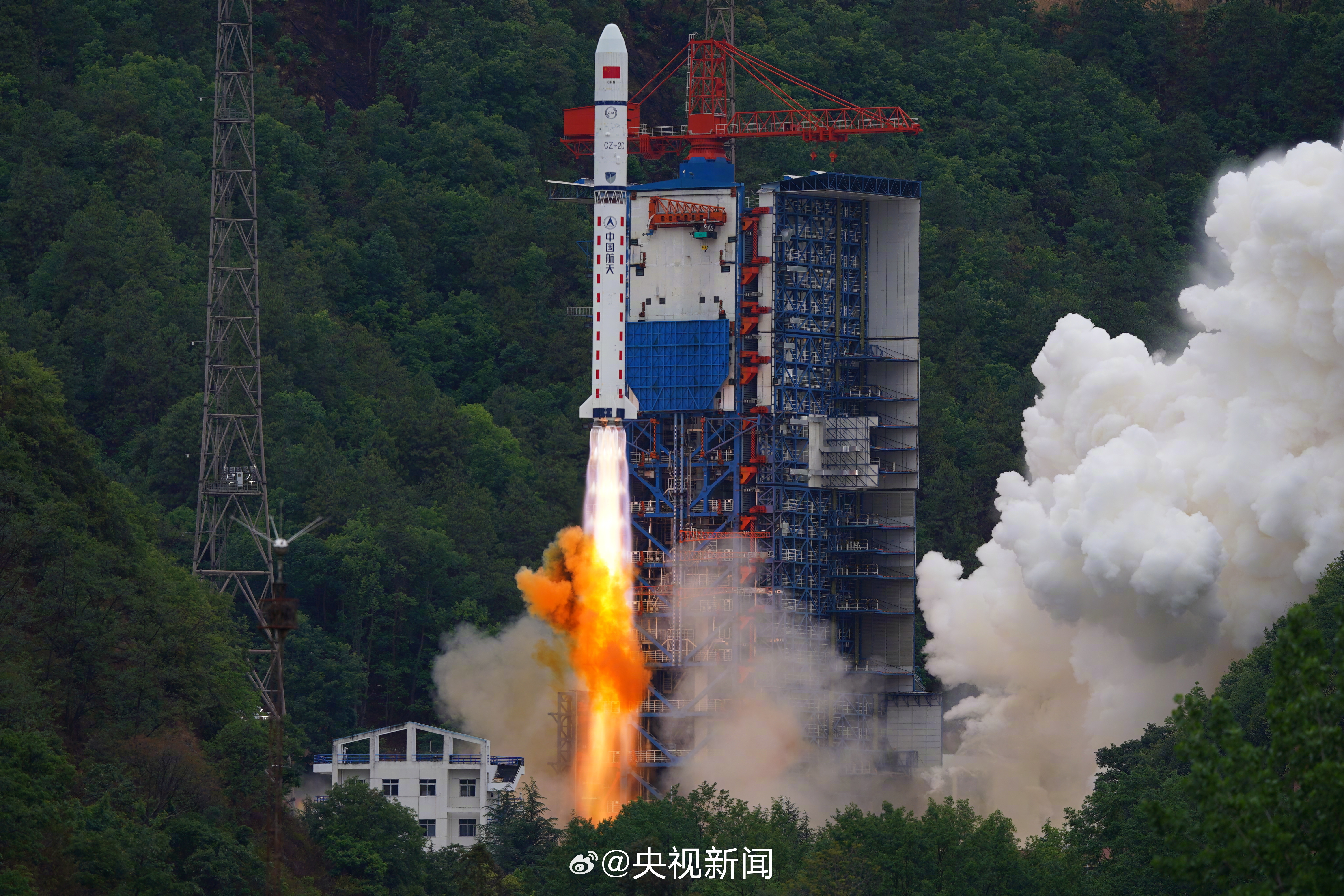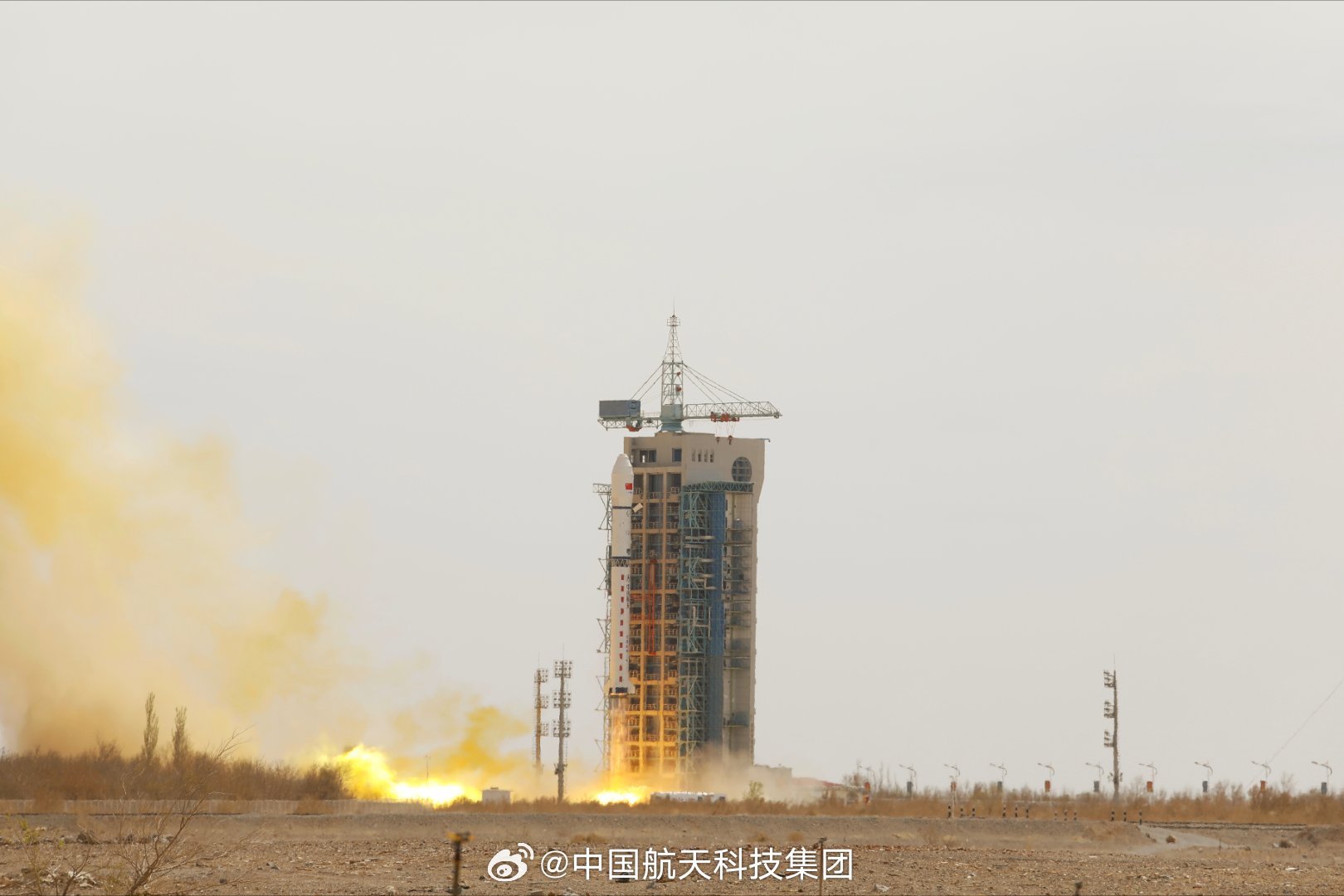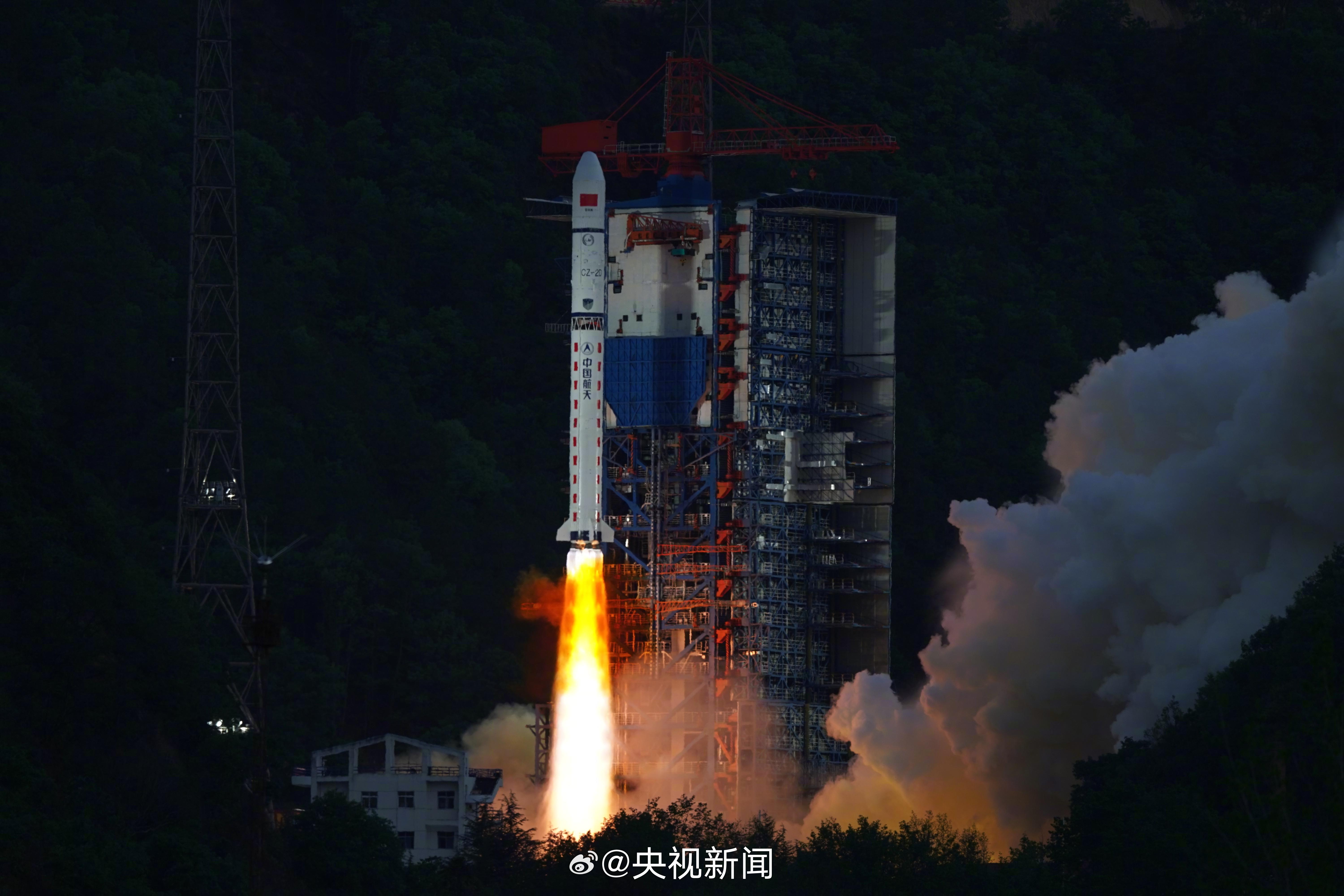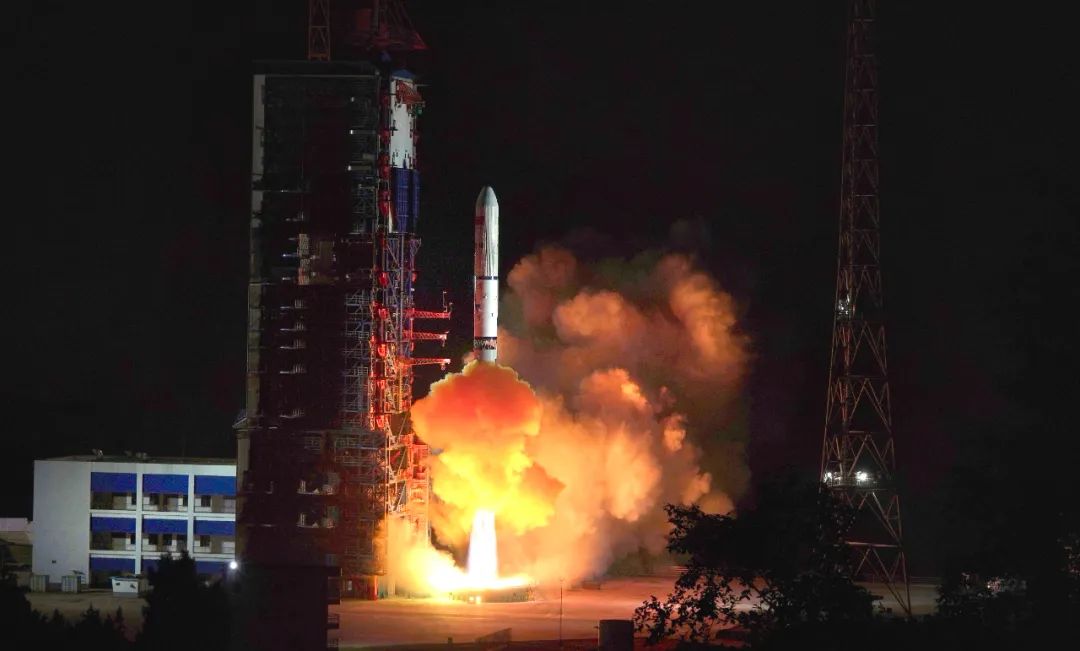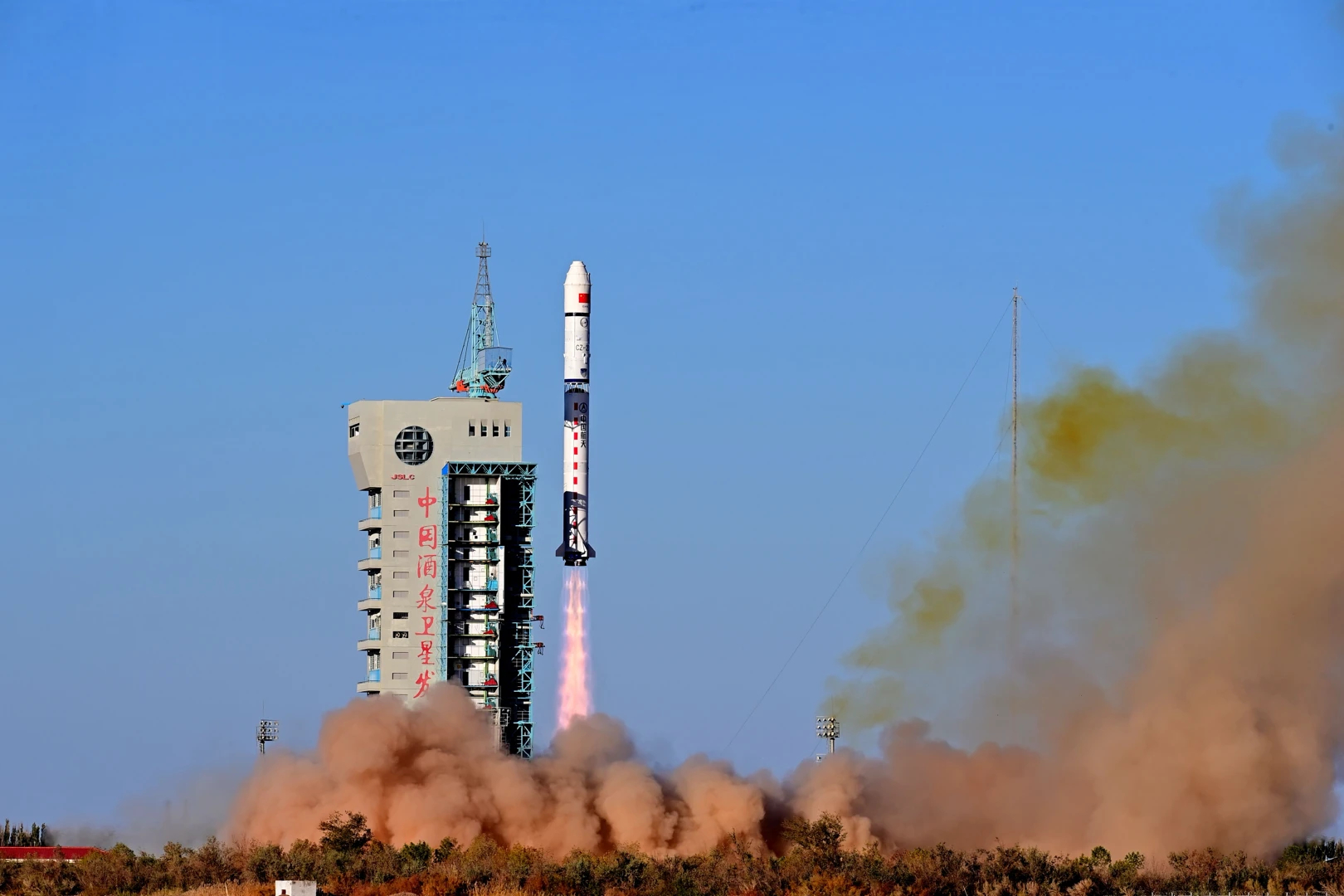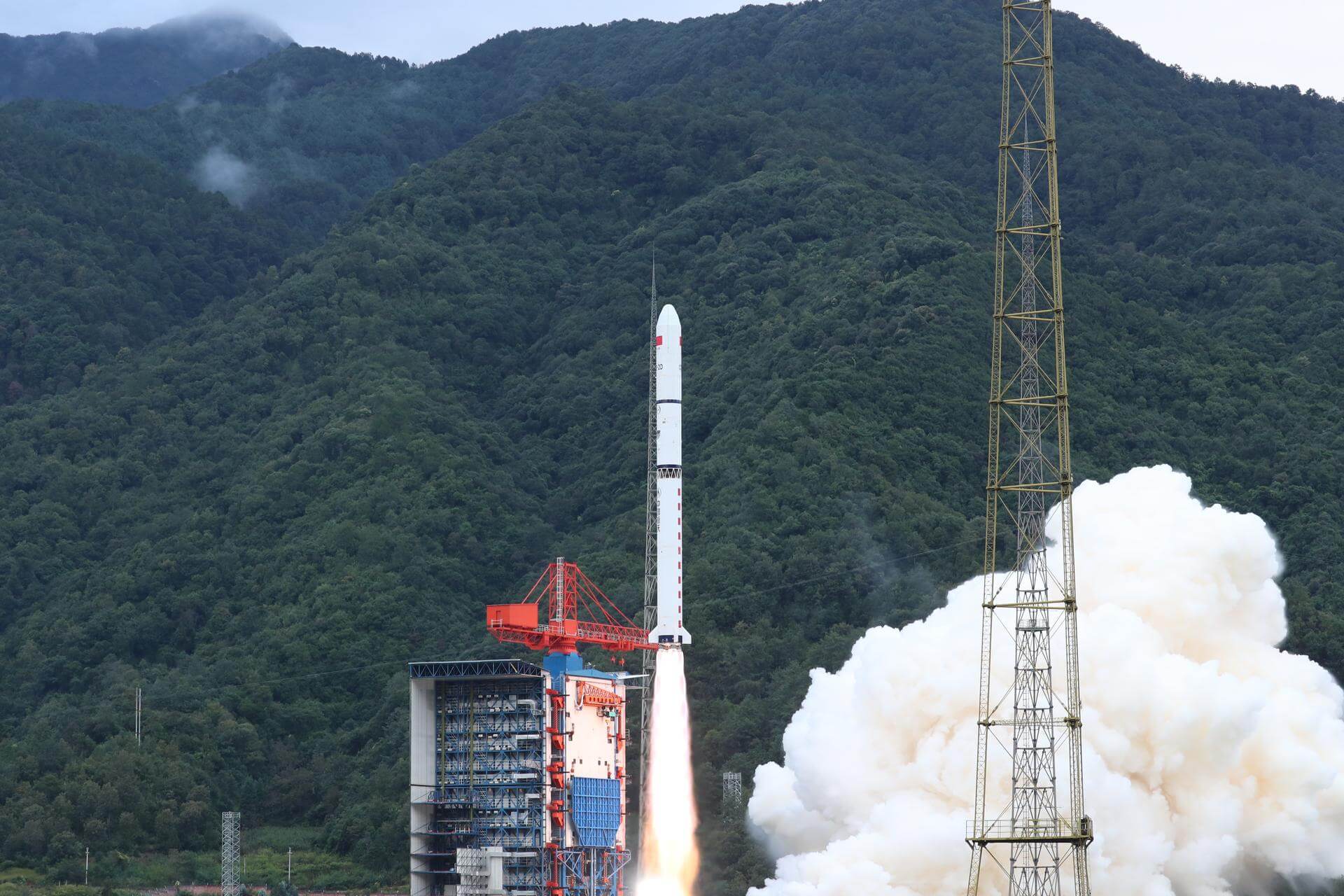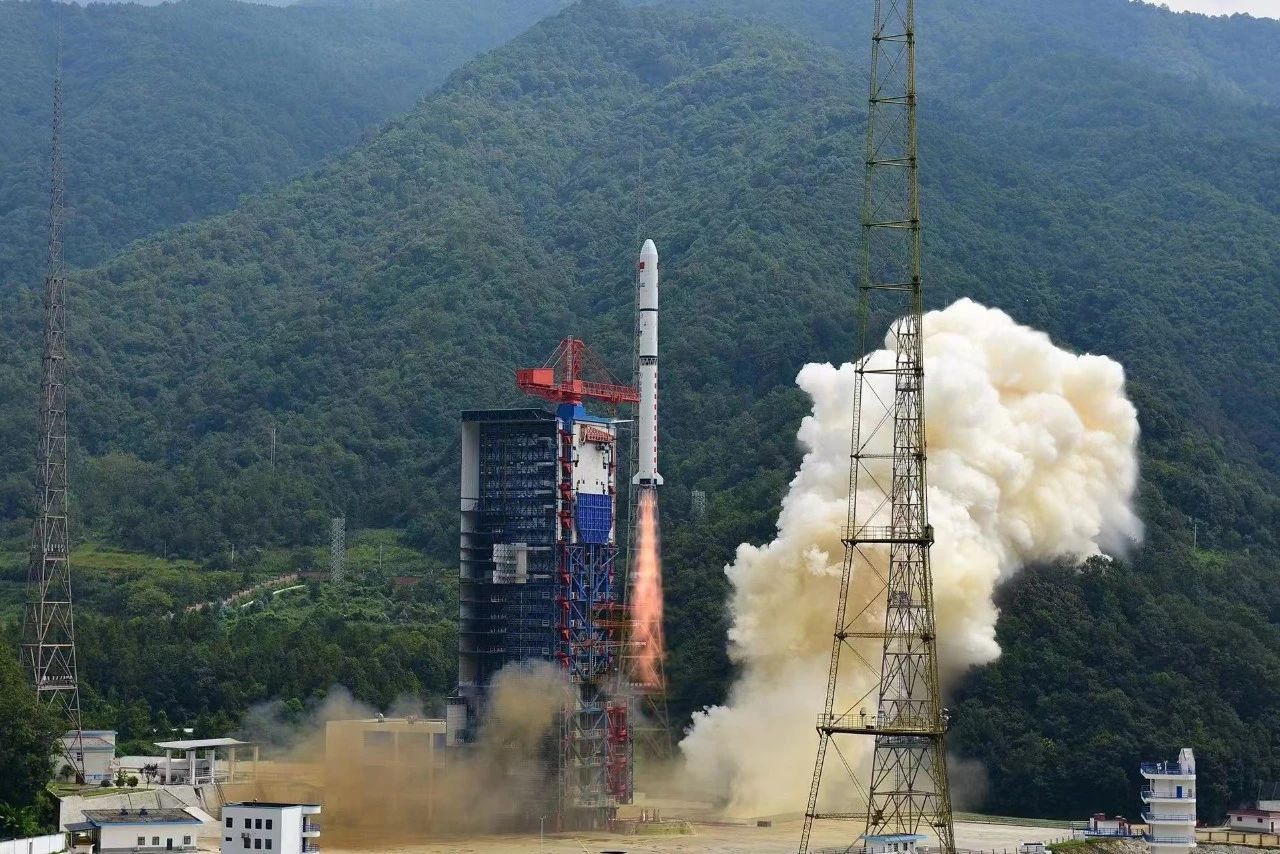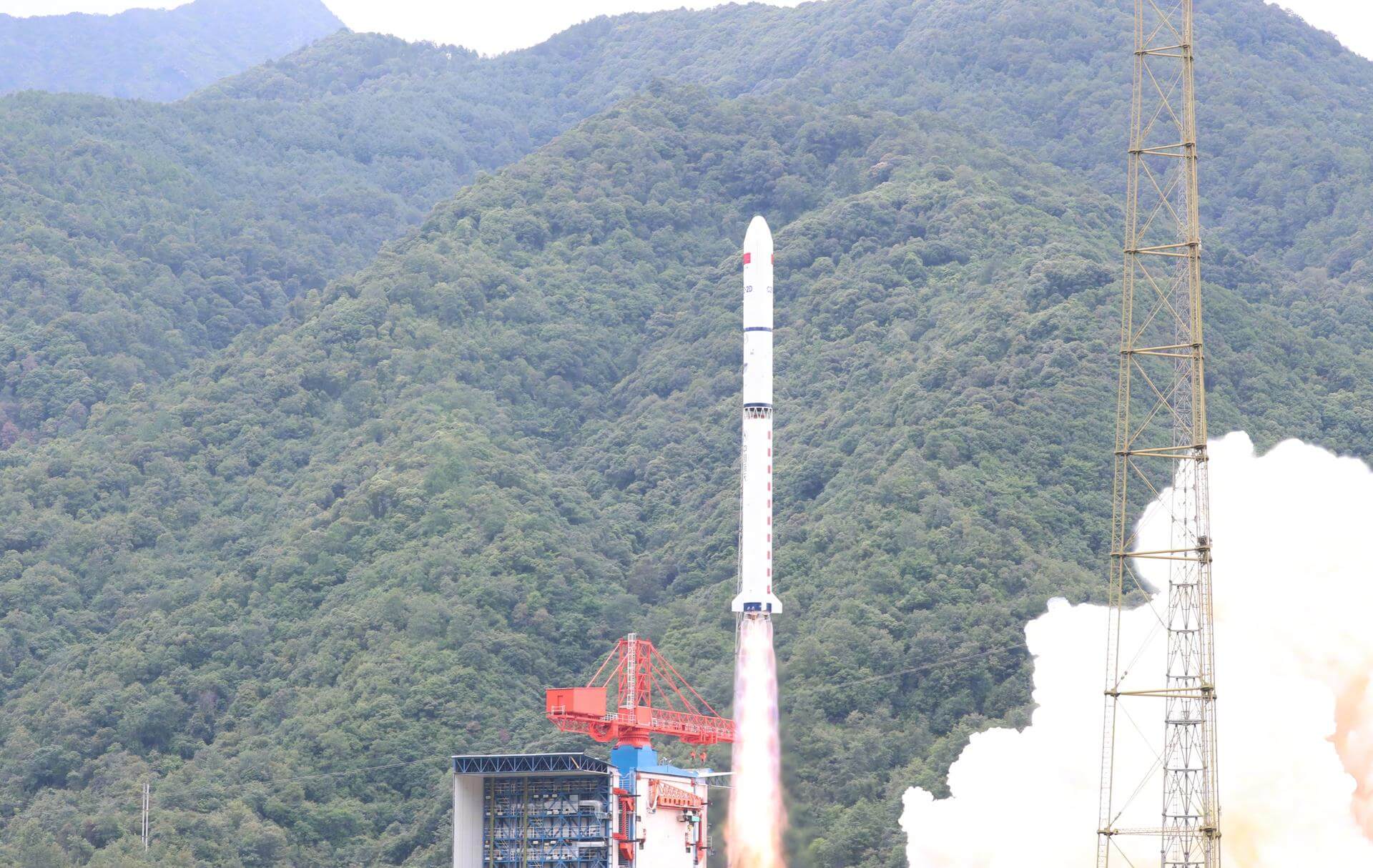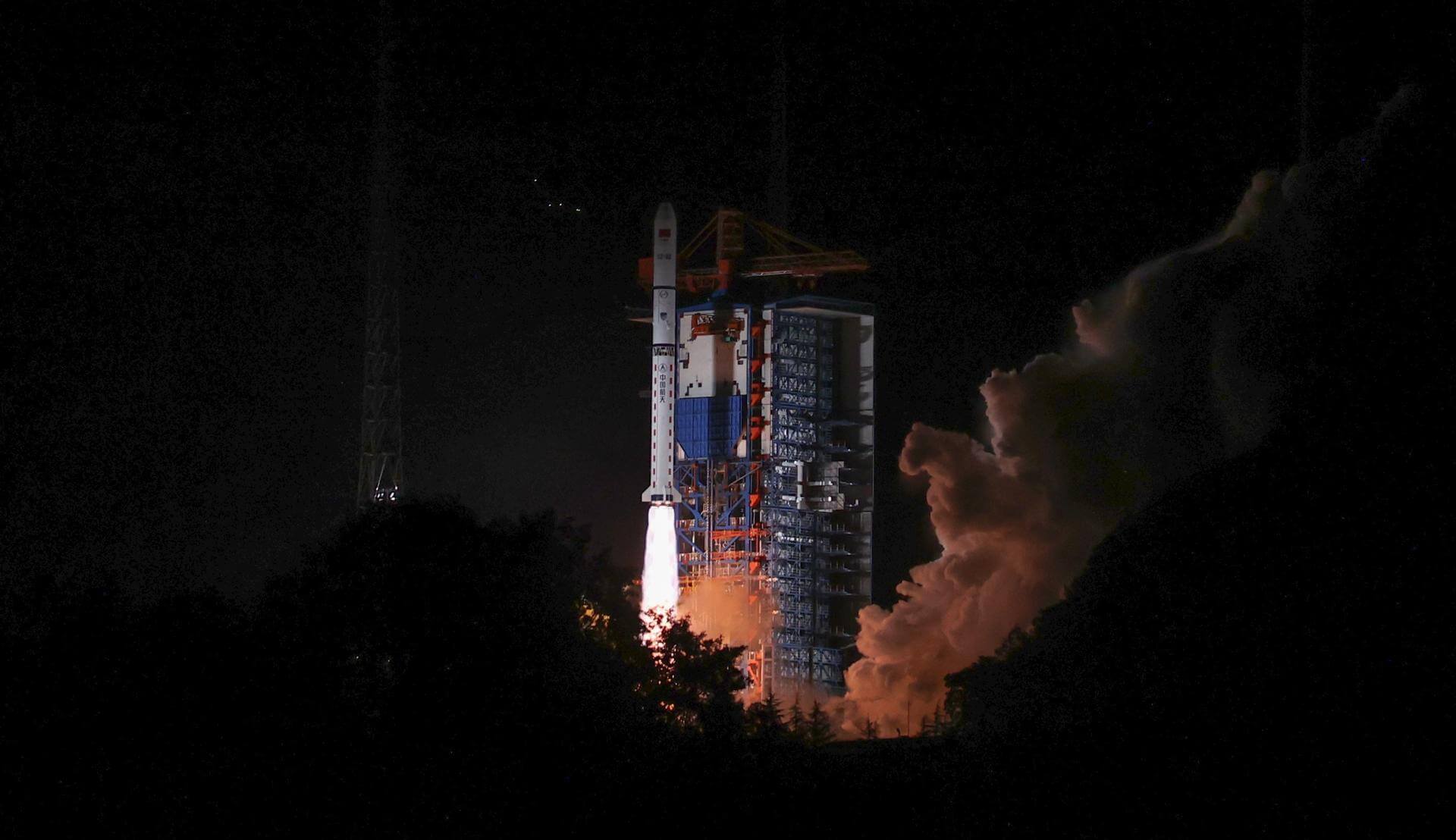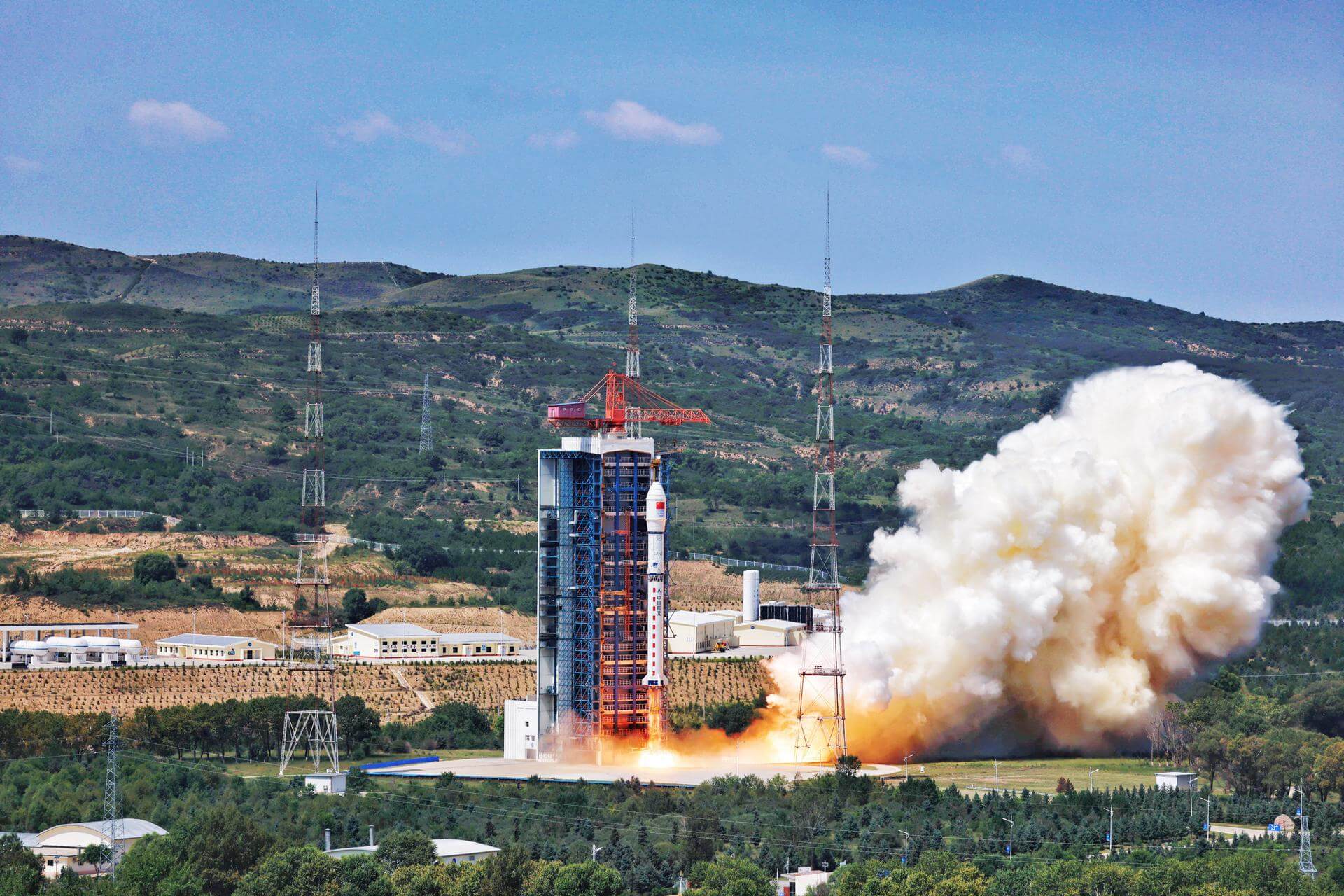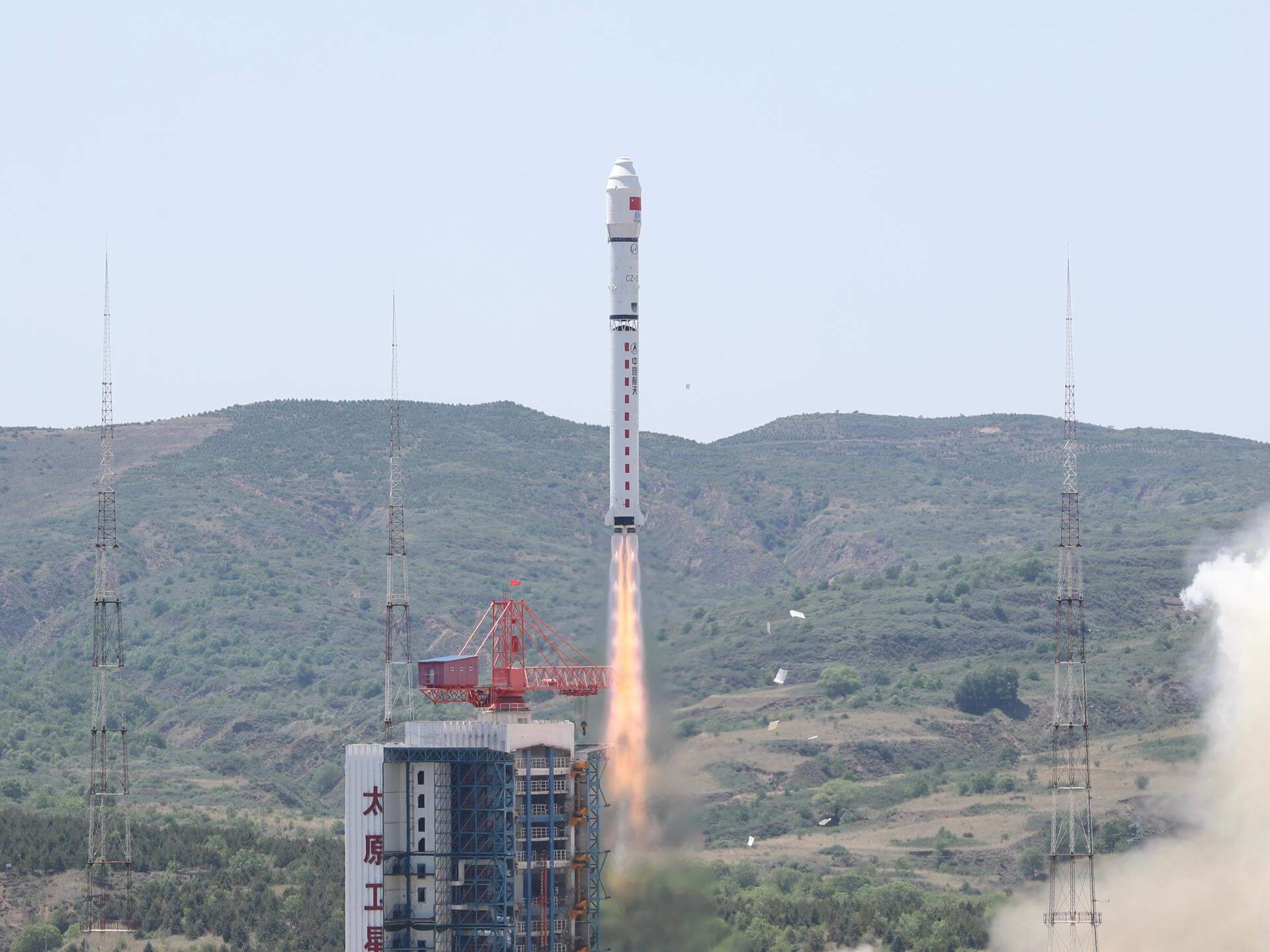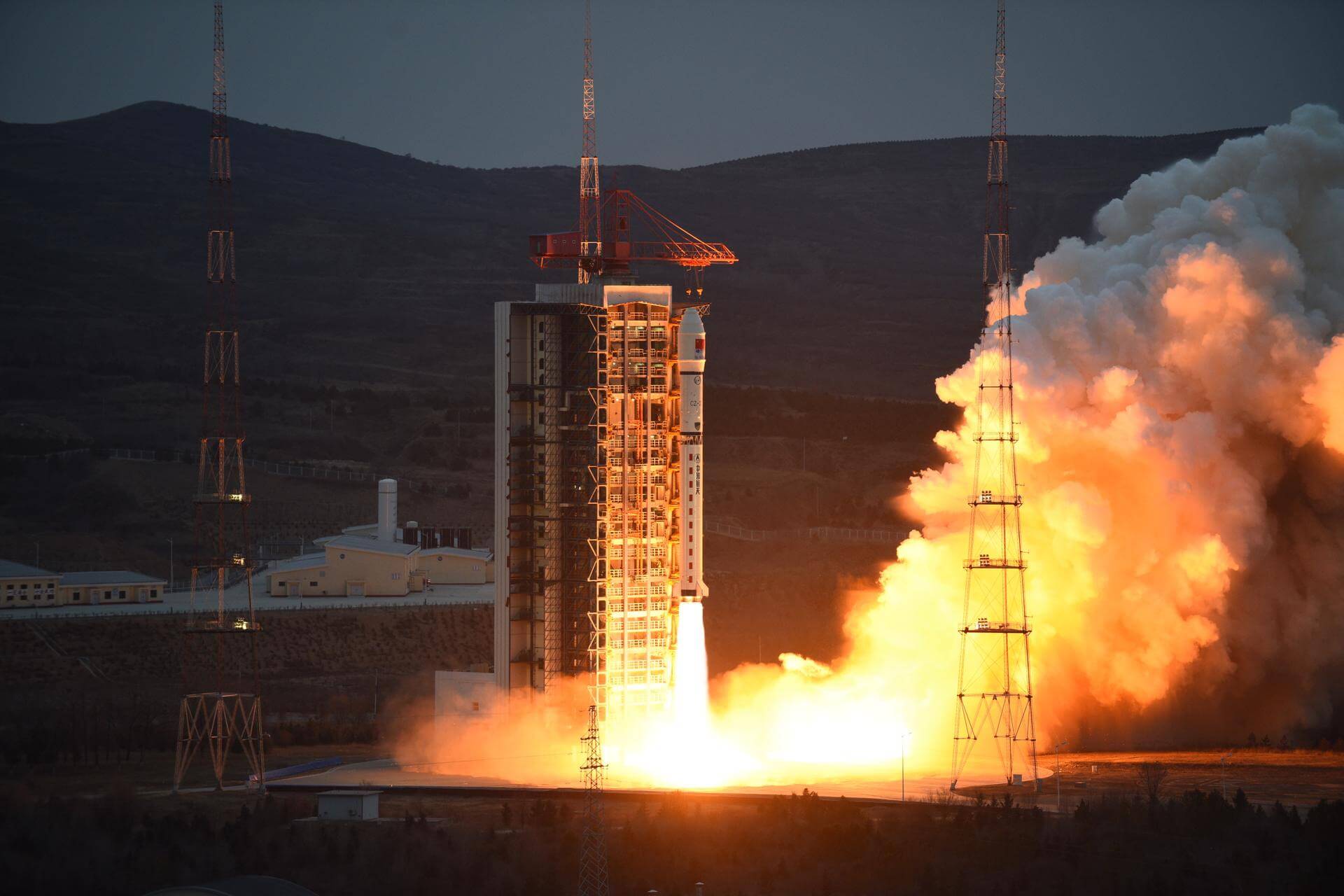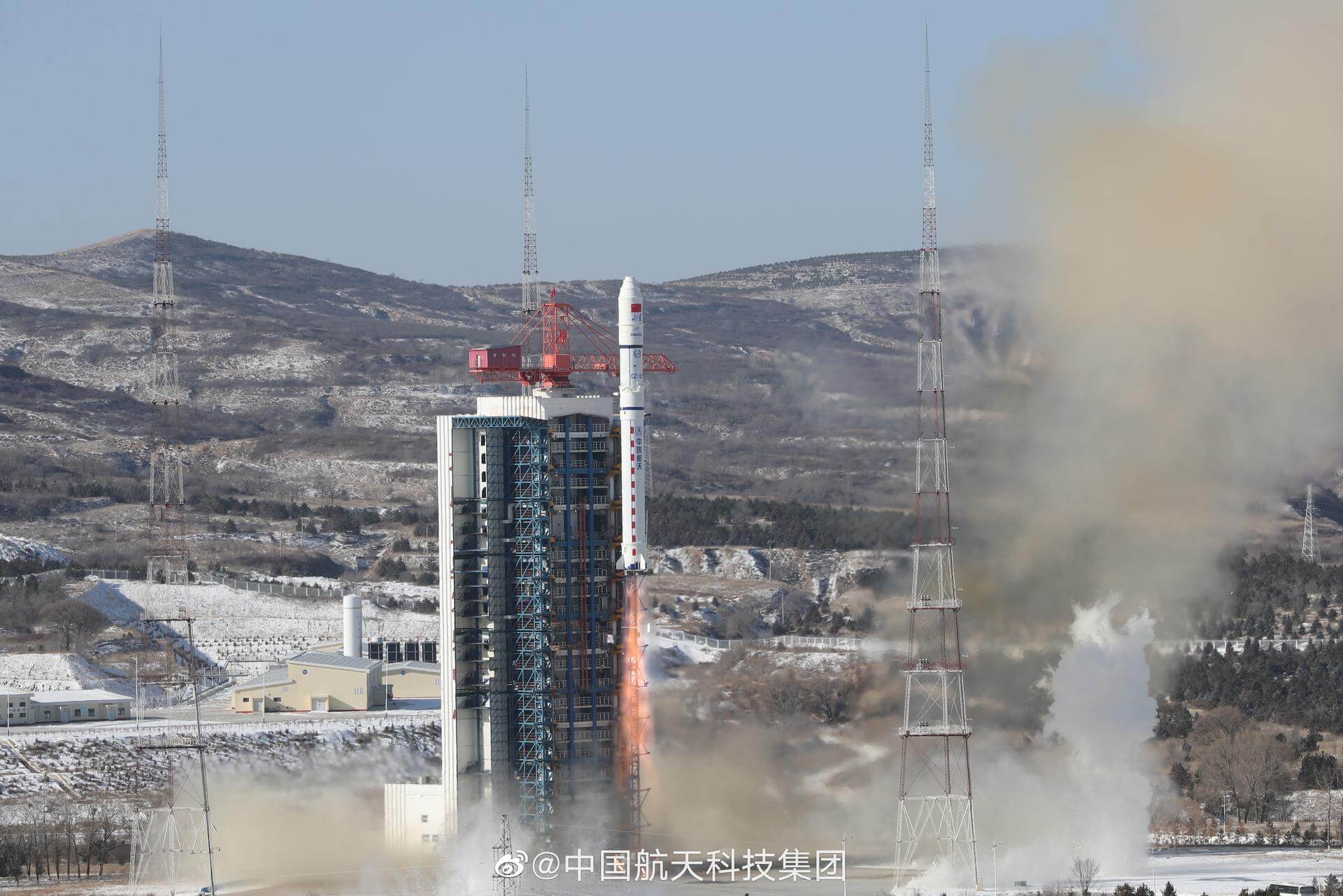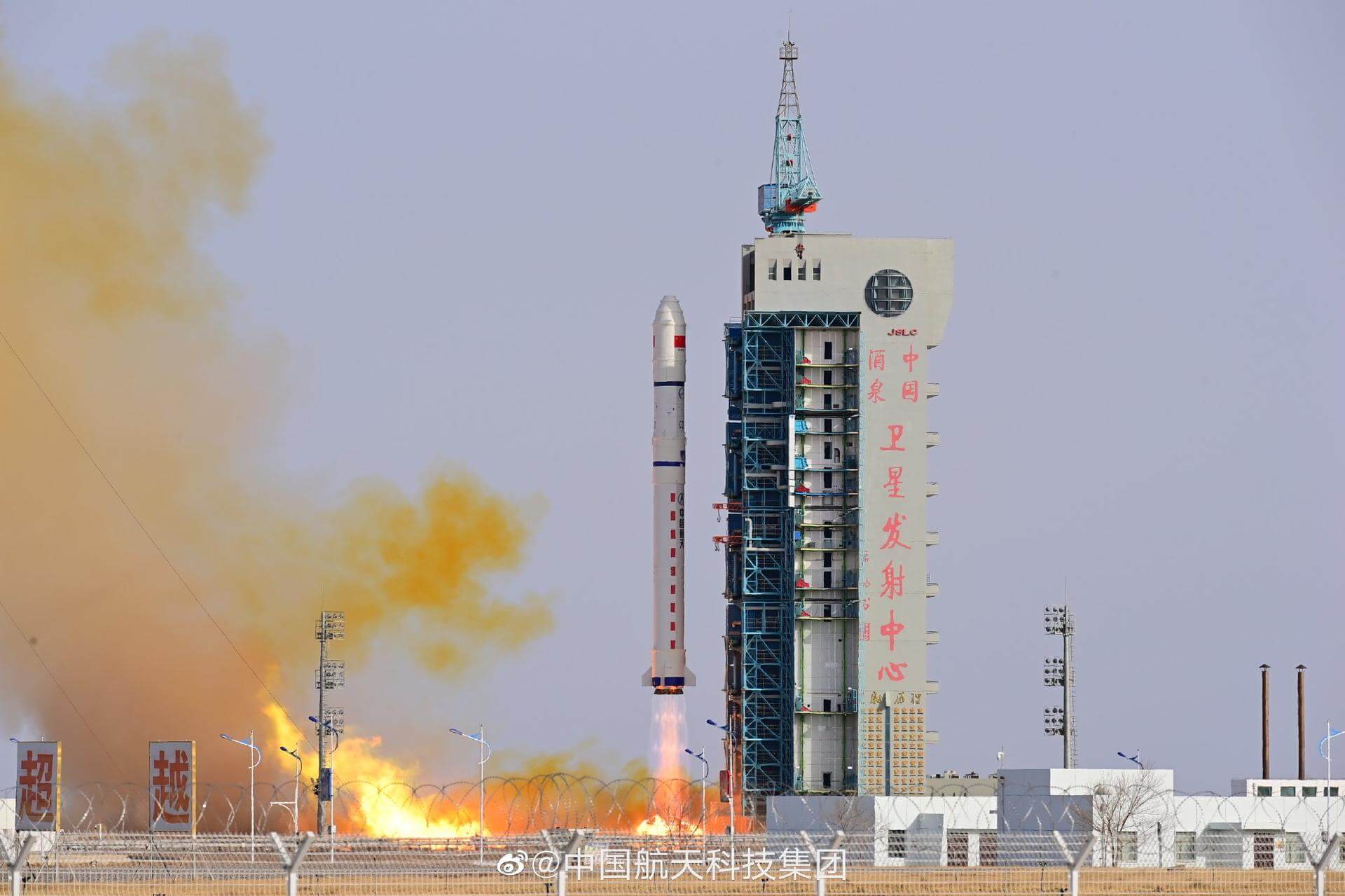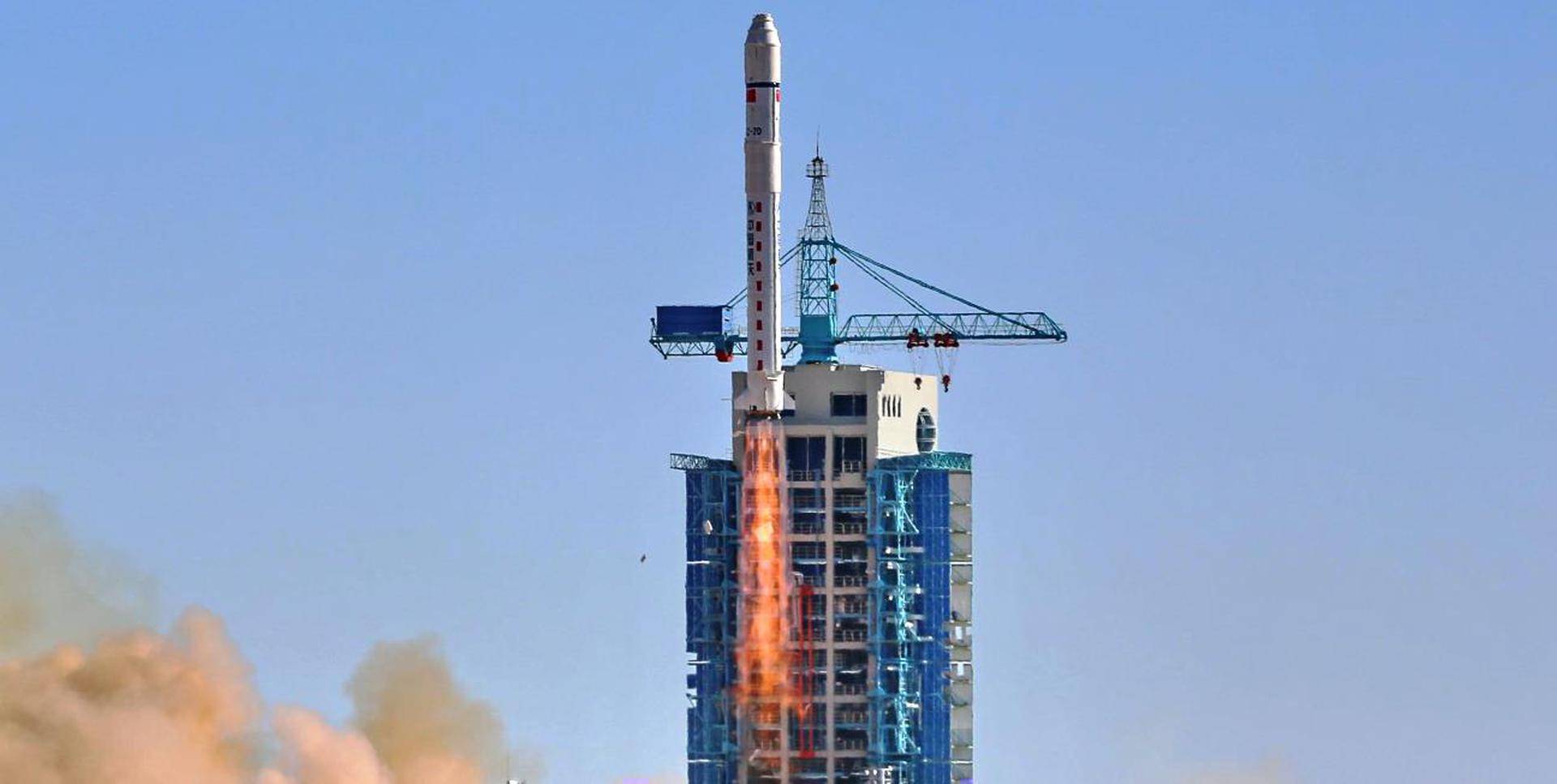
Long March 2D
ActiveChina Aerospace Science and Technology Corporation (CASC)
Aug. 9, 1992
Description
The Long March 2D, also known as the Chang Zheng 2D, CZ-2D and LM-2D, is a Chinese orbital carrier rocket. It is a 2-stage carrier rocket mainly used for launching LEO and SSO satellites.
Specifications
-
Minimum Stage
1 -
Max Stage
2 -
Length
38.3 m -
Diameter
3.35 m -
Fairing Diameter
― -
Launch Mass
232.0 T -
Thrust
2962.0 kN -
Apogee (Sub-Orbital)
500.0 km
Family
-
Name
Long March 2D -
Family
― -
Variant
D -
Alias
― -
Full Name
Long March 2D
Payload Capacity
-
Launch Cost
$30000000 -
Low Earth Orbit
3500.0 kg -
Geostationary Transfer
Orbit
― -
Direct Geostationary
― -
Sun-Synchronous Capacity
1300.0 kg
China Aerospace Science and Technology Corporation
Government
Chairman & President: Lei Fanpei
CASC 1999The China Aerospace Science and Technology Corporation (CASC) is the main contractor for the Chinese space program. It is state-owned and has a number of subordinate entities which design, develop and manufacture a range of spacecraft, launch vehicles, strategic and tactical missile systems, and ground equipment. It was officially established in July 1999 as part of a Chinese government reform drive, having previously been one part of the former China Aerospace Corporation. Various incarnations of the program date back to 1956.
Long March 2D | Shiyan 31
China Aerospace Science and Technology Corporation | ChinaJiuquan Satellite Launch Center, People's Republic of China
Oct. 13, 2025, 10 a.m.
Long March 2D | Shiyan 30 01-02
China Aerospace Science and Technology Corporation | ChinaXichang Satellite Launch Center, People's Republic of China
Sept. 29, 2025, 3 a.m.
Long March 2D | Zhangheng-1-02
China Aerospace Science and Technology Corporation | ChinaJiuquan Satellite Launch Center, People's Republic of China
June 14, 2025, 7:56 a.m.
Status: Launch Successful
Mission:
Zhangheng 1-02, also known as CSES-02 (China Seismo-Electromagnetic Satellite-02), is the follow-on mission to Zhangheng 1/CSES, a Chinese–Italian space mission dedicated to monitoring the electromagnetic field and waves, plasma parameters, and particle fluxes induced by natural sources and artificial emitters in near-Earth space, to study their correlations with the occurrence of seismic events. The satellite mission is part of a collaboration program between the CNSA (China National Space Administration) and ASI (Italian Space Agency), and developed by CEA (China Earthquake Administration) and INFN (Italian National Institute for Nuclear Physics), together with several Chinese and Italian Universities and research Institutes.
Sun-Synchronous OrbitLong March 2D | Space Computing Constellation
China Aerospace Science and Technology Corporation | ChinaJiuquan Satellite Launch Center, People's Republic of China
May 14, 2025, 4:12 a.m.
Long March 2D | 4 x SatNet test satellites
China Aerospace Science and Technology Corporation | ChinaJiuquan Satellite Launch Center, People's Republic of China
April 1, 2025, 4 a.m.
Status: Launch Successful
Mission:
Officially described as "Satellite-Internet Technology Demonstration Satellites". Probable 4 test satellites for the Chinese state-owned LEO communication satellite constellation SatNet, 2 by Galaxy Space and 2 by Chang Guang Satellite Technology Co.
Low Earth OrbitLong March 2D | SuperView Neo 3-02
China Aerospace Science and Technology Corporation | ChinaJiuquan Satellite Launch Center, People's Republic of China
March 15, 2025, 4:11 a.m.
Long March 2D | PRSC-EO1
China Aerospace Science and Technology Corporation | ChinaJiuquan Satellite Launch Center, People's Republic of China
Jan. 17, 2025, 4:07 a.m.
Long March 2D | PIESAT-2 09-12
China Aerospace Science and Technology Corporation | ChinaTaiyuan Satellite Launch Center, People's Republic of China
Dec. 16, 2024, 6:50 p.m.
Long March 2D | Shijian 19
China Aerospace Science and Technology Corporation | ChinaJiuquan Satellite Launch Center, People's Republic of China
Sept. 27, 2024, 10:30 a.m.
Status: Launch Successful
Mission:
Shijian 19 is a Chinese recoverable satellite for hoisting various scientific experiments in microgravity. Unlike previous similar Chinese satellites, the return capsule can be reused up to 15 times and can carry about 500 kg of recoverable payload, as well as 200 kg of unrecoverable payload. This type of satellite can be flown in a short term configuration powered by batteries or in a long term configuration with solar arrays.
Low Earth OrbitLong March 2D | Jilin-1 Wideband 02B-01 to 06
China Aerospace Science and Technology Corporation | ChinaTaiyuan Satellite Launch Center, People's Republic of China
Sept. 20, 2024, 4:11 a.m.
Long March 2D | Beijing 3C
China Aerospace Science and Technology Corporation | ChinaTaiyuan Satellite Launch Center, People's Republic of China
May 20, 2024, 3:06 a.m.
Long March 2D | Yaogan 42-02
China Aerospace Science and Technology Corporation | ChinaXichang Satellite Launch Center, People's Republic of China
April 20, 2024, 11:45 p.m.
Long March 2D | SuperView Neo 3-01
China Aerospace Science and Technology Corporation | ChinaJiuquan Satellite Launch Center, People's Republic of China
April 15, 2024, 4:12 a.m.
Long March 2D | Yaogan 42-01
China Aerospace Science and Technology Corporation | ChinaXichang Satellite Launch Center, People's Republic of China
April 2, 2024, 10:56 p.m.
Long March 2D | Yaogan 39 Group 05
China Aerospace Science and Technology Corporation | ChinaXichang Satellite Launch Center, People's Republic of China
Dec. 10, 2023, 1:58 a.m.
Long March 2D | Yaogan 39 Group 04
China Aerospace Science and Technology Corporation | ChinaXichang Satellite Launch Center, People's Republic of China
Oct. 23, 2023, 8:03 p.m.
Long March 2D | Yunhai-1-04
China Aerospace Science and Technology Corporation | ChinaJiuquan Satellite Launch Center, People's Republic of China
Oct. 15, 2023, 12:54 a.m.
Status: Launch Successful
Mission:
The Yunhai-1 satellite is designed for detecting environmental elements in the atmosphere and ocean, the space environment, disaster prevention and reduction, and scientific experimentation. It is made by the Shanghai Institute of Spaceflight Technology.
Sun-Synchronous OrbitLong March 2D | Yaogan 39 Group 03
China Aerospace Science and Technology Corporation | ChinaXichang Satellite Launch Center, People's Republic of China
Oct. 5, 2023, 12:24 a.m.
Long March 2D | Yaogan 39 Group 02
China Aerospace Science and Technology Corporation | ChinaXichang Satellite Launch Center, People's Republic of China
Sept. 17, 2023, 4:13 a.m.
Long March 2D | Yaogan 39 Group 01
China Aerospace Science and Technology Corporation | ChinaXichang Satellite Launch Center, People's Republic of China
Aug. 31, 2023, 7:36 a.m.
Long March 2D | Yaogan 36 Group 05
China Aerospace Science and Technology Corporation | ChinaXichang Satellite Launch Center, People's Republic of China
July 26, 2023, 8:02 p.m.
Long March 2D | Skysight AS-01 to 03 & Lingxi-03
China Aerospace Science and Technology Corporation | ChinaTaiyuan Satellite Launch Center, People's Republic of China
July 23, 2023, 2:50 a.m.
Long March 2D | 41 x Jilin-1
China Aerospace Science and Technology Corporation | ChinaTaiyuan Satellite Launch Center, People's Republic of China
June 15, 2023, 5:30 a.m.
Long March 2D | PIESAT-1 x 4
China Aerospace Science and Technology Corporation | ChinaTaiyuan Satellite Launch Center, People's Republic of China
March 30, 2023, 10:50 a.m.
Long March 2D | 6 x Jilin-1, Qilu-2/3 & others
China Aerospace Science and Technology Corporation | ChinaTaiyuan Satellite Launch Center, People's Republic of China
Jan. 15, 2023, 3:14 a.m.
Status: Launch Successful
Mission:
This launch carries multiple payloads, including 6 new satellites for the Jilin-1 commercial Earth observation satellite constellation and Qilu-2/3, 2 optical Earth observation satellites for the Shandong Province Industrial Technology Research Institute.
Sun-Synchronous OrbitLong March 2D | Yaogan 37 & Shiyan 22A/B
China Aerospace Science and Technology Corporation | ChinaJiuquan Satellite Launch Center, People's Republic of China
Jan. 13, 2023, 7 a.m.
Long March 2D | Yaogan 36 Group 04
China Aerospace Science and Technology Corporation | ChinaXichang Satellite Launch Center, People's Republic of China
Dec. 14, 2022, 6:25 p.m.
Long March 2D | Gaofen-5-01A
China Aerospace Science and Technology Corporation | ChinaTaiyuan Satellite Launch Center, People's Republic of China
Dec. 8, 2022, 6:31 p.m.
Status: Launch Successful
Mission:
Gaofen-5-01A is a hyperspectral Earth observation satellite. Instruments include a 1500 km swath width Infared imager, a 2.5nm spectral-resolution visible-near infrared hyperspectral imager & a differential absorption spectrometer for measuring atmospheric trace gas.
Sun-Synchronous OrbitLong March 2D | Yaogan 36 Group 03
China Aerospace Science and Technology Corporation | ChinaXichang Satellite Launch Center, People's Republic of China
Nov. 27, 2022, 12:23 p.m.
Long March 2D | Yaogan 36 Group 02
China Aerospace Science and Technology Corporation | ChinaXichang Satellite Launch Center, People's Republic of China
Oct. 14, 2022, 7:12 p.m.
Long March 2D | Advanced Space-borne Solar Observatory (ASO-S)
China Aerospace Science and Technology Corporation | ChinaJiuquan Satellite Launch Center, People's Republic of China
Oct. 8, 2022, 11:43 p.m.
Status: Launch Successful
Mission:
ASO-S (Advanced Space-borne Solar Observatory) is a Chinese solar space observatory that aims to study the interaction between the Sun's magnetic field, solar flares and coronal mass ejections. It's the first space solar observatory of China. ASO-S is a 3-axis stabilized satellite with a mass of less than 1,000 kg with a pointing accuracy of 0.01° and an orientation stability of 1 to 2 arc seconds every 20 seconds. The payload has a mass below 335 kg and consumes about 300 watts. The platform's pointing accuracy is lower than 0.01°, the measurement accuracy is lower than 1 arc second and the orientation drift is below 0.0004°/s. ASO-S has three instruments: - The Full-Disc Vector Magnetograph (FMG) instrument is intended to map the magnetic field of the photosphere over the entire solar disk. It includes an imager, an optical polarization system and a CCD detector. - The Hard X-ray Imager (HXI) camera should image the whole solar disk in X-rays. The instrument is optimized to take images of solar flares. - A set of three LST (Lyman-alpha Solar Telescope) telescopes is used to observe the Lyman-alpha line (121.6 nm) of solar flares up to a distance of several solar radii from the Sun's disk. These three telescopes are SDI (to obtain an image of the solar disk), SCI (coronagraph for observation between 1.1 and 2.5 solar radii) and WST (white light emitted by the solar disk used for calibration purposes).
Sun-Synchronous OrbitLong March 2D | Yaogan 36
China Aerospace Science and Technology Corporation | ChinaXichang Satellite Launch Center, People's Republic of China
Sept. 26, 2022, 1:38 p.m.
Long March 2D | Yunhai-1-03
China Aerospace Science and Technology Corporation | ChinaJiuquan Satellite Launch Center, People's Republic of China
Sept. 20, 2022, 11:15 p.m.
Status: Launch Successful
Mission:
The Yunhai-1 satellite is designed for detecting environmental elements in the atmosphere and ocean, the space environment, disaster prevention and reduction, and scientific experimentation. It is made by the Shanghai Institute of Spaceflight Technology.
Sun-Synchronous OrbitLong March 2D | Yaogan 35 Group 05
China Aerospace Science and Technology Corporation | ChinaXichang Satellite Launch Center, People's Republic of China
Sept. 6, 2022, 4:19 a.m.
Long March 2D | Beijing-3B
China Aerospace Science and Technology Corporation | ChinaTaiyuan Satellite Launch Center, People's Republic of China
Aug. 24, 2022, 3:01 a.m.
Long March 2D | Yaogan 35 Group 04
China Aerospace Science and Technology Corporation | ChinaXichang Satellite Launch Center, People's Republic of China
Aug. 19, 2022, 5:37 p.m.
Long March 2D | Yaogan 35 Group 03
China Aerospace Science and Technology Corporation | ChinaXichang Satellite Launch Center, People's Republic of China
July 29, 2022, 1:28 p.m.
Long March 2D | Yaogan 35 Group 02
China Aerospace Science and Technology Corporation | ChinaXichang Satellite Launch Center, People's Republic of China
June 23, 2022, 2:22 a.m.
Long March 2D | Jilin-1 Wideband-01C & High Resolution 03D-27 to 33
China Aerospace Science and Technology Corporation | ChinaTaiyuan Satellite Launch Center, People's Republic of China
May 5, 2022, 2:38 a.m.
Long March 2D | Shiyan 13
China Aerospace Science and Technology Corporation | ChinaTaiyuan Satellite Launch Center, People's Republic of China
Jan. 17, 2022, 2:35 a.m.
Long March 2D | Tianhui 4
China Aerospace Science and Technology Corporation | ChinaJiuquan Satellite Launch Center, People's Republic of China
Dec. 29, 2021, 11:13 a.m.
Long March 2D | Yaogan 35 A/B/C
China Aerospace Science and Technology Corporation | ChinaXichang Satellite Launch Center, People's Republic of China
Nov. 6, 2021, 3 a.m.
Long March 2D | Xihe (CHASE)
China Aerospace Science and Technology Corporation | ChinaTaiyuan Satellite Launch Center, People's Republic of China
Oct. 14, 2021, 10:51 a.m.
Status: Launch Successful
Mission:
Xihe, also known as the Chinese Hα Solar Explorer (CHASE), is designed to test a newly developed satellite platform and conduct solar observations. The scientific payload of the satellite is an Hα imaging spectrograph (HIS), which can, for the first time, acquire full-disk spectroscopic solar observations in the Hα waveband. It will complement the observations by on-orbit solar spacecraft (such as SDO, IRIS, STEREO and PSP), as well as future solar missions of the Solar Orbiter and the Chinese Advanced Space-based Solar Observatory (ASO-S). Mission is named Xihe after a solar deity from Chinese mythology.
Sun-Synchronous OrbitLong March 2D | Tianhui-1-04
China Aerospace Science and Technology Corporation | ChinaJiuquan Satellite Launch Center, People's Republic of China
July 29, 2021, 4:01 a.m.
Status: Launch Successful
Mission:
TH 1 (Tianhui-1 = "Sky drawing") is a Chinese stereo-topographic mapping satellite operated by the People’s Liberation Army (PLA). The satellites are built by the Hangtian Dongfanghong Weixing Corporation and the China Aerospace Science and Technology Corporation and the Chinese Academy of Space Technology (CAST). The satellites operate on a 500 km circular sun synchronous orbit. Electrical power is provided by two deployable solar panels that is stored on onboard batteries. They are equipped with a three-dimensional survey camera and a CCD camera with a ground resolution of 5 meters, spectral region of 0.51 µm to 0.69 µm and with a camera angle of 25 degrees. Also on board is a multi-spectral camera with a ground resolution of 10 meters operating in four spectral bands of 0.43 µm to 0.52 µm, 0.52 µm to 0.61 µm, 0.61 µm to 0.69 µm, and 0.76 µm to 0.90 µm. The swath width of the cameras is 60 kilometers wide.
Sun-Synchronous OrbitLong March 2D | Jilin-1 Wideband-01B & High Resolution 03D
China Aerospace Science and Technology Corporation | ChinaTaiyuan Satellite Launch Center, People's Republic of China
July 3, 2021, 2:51 a.m.
Long March 2D | Beijing-3
China Aerospace Science and Technology Corporation | ChinaTaiyuan Satellite Launch Center, People's Republic of China
June 11, 2021, 3:03 a.m.
Long March 2D | Gaofen-9-05
China Aerospace Science and Technology Corporation | ChinaJiuquan Satellite Launch Center, People's Republic of China
Aug. 23, 2020, 2:27 a.m.
Status: Launch Successful
Mission:
Gaofen is a series of civilian Earth observation satellites developed and launched for the China High-definition Earth Observation System (CHEOS), a state-sponsored programme aimed to develop a near-real time, all-weather, global surveillance network consisting of satellite, near-space (stratosphere) airships, and aerial observation platforms.
Sun-Synchronous OrbitLong March 2D | Gaofen-9-04
China Aerospace Science and Technology Corporation | ChinaJiuquan Satellite Launch Center, People's Republic of China
Aug. 6, 2020, 4:01 a.m.
Status: Launch Successful
Mission:
Gaofen is a series of civilian Earth observation satellites developed and launched for the China High-definition Earth Observation System (CHEOS), a state-sponsored programme aimed to develop a near-real time, all-weather, global surveillance network consisting of satellite, near-space (stratosphere) airships, and aerial observation platforms.
Sun-Synchronous OrbitLong March 2D | Chuangxin 3A (02)
China Aerospace Science and Technology Corporation | ChinaJiuquan Satellite Launch Center, People's Republic of China
July 4, 2020, 11:44 p.m.
Long March 2D | Gaofen-9-03
China Aerospace Science and Technology Corporation | ChinaJiuquan Satellite Launch Center, People's Republic of China
June 17, 2020, 7:19 a.m.
Status: Launch Successful
Mission:
Gaofen is a series of civilian Earth observation satellites developed and launched for the China High-definition Earth Observation System (CHEOS), a state-sponsored programme aimed to develop a near-real time, all-weather, global surveillance network consisting of satellite, near-space (stratosphere) airships, and aerial observation platforms.
Sun-Synchronous OrbitLong March 2D | Gaofen-9-02
China Aerospace Science and Technology Corporation | ChinaJiuquan Satellite Launch Center, People's Republic of China
May 31, 2020, 8:53 a.m.
Status: Launch Successful
Mission:
Gaofen is a series of civilian Earth observation satellites developed and launched for the China High-definition Earth Observation System (CHEOS), a state-sponsored programme aimed to develop a near-real time, all-weather, global surveillance network consisting of satellite, near-space (stratosphere) airships, and aerial observation platforms.
Sun-Synchronous OrbitLong March 2D | XJS-C, XJS-D, XJS-E, XJS-F
China Aerospace Science and Technology Corporation | ChinaXichang Satellite Launch Center, People's Republic of China
Feb. 19, 2020, 9:07 p.m.
Long March 2D | Jilin-1 Wideband 01, Tianqi-4, NuSat-7 & 8
China Aerospace Science and Technology Corporation | ChinaTaiyuan Satellite Launch Center, People's Republic of China
Jan. 15, 2020, 2:53 a.m.
Long March 2D | Yunhai-1-02
China Aerospace Science and Technology Corporation | ChinaJiuquan Satellite Launch Center, People's Republic of China
Sept. 25, 2019, 12:54 a.m.
Status: Launch Successful
Mission:
The Yunhai-1 satellite is designed for detecting environmental elements in the atmosphere and ocean, the space environment, disaster prevention and reduction, and scientific experimentation. It is made by the Shanghai Institute of Spaceflight Technology.
Long March 2D | SaudiSat 5A & 5B
China Aerospace Science and Technology Corporation | ChinaJiuquan Satellite Launch Center, People's Republic of China
Dec. 7, 2018, 4:12 a.m.
Long March 2D | Shiyan 6, Jiading-1 (OKW-1) & others
China Aerospace Science and Technology Corporation | ChinaJiuquan Satellite Launch Center, People's Republic of China
Nov. 19, 2018, 11:40 p.m.
Status: Launch Successful
Mission:
Shiyan 6 is the main payload of the launch and is reported to be used for "space environment measurements and related technical tests". It was launched along with 4 small satellites, among which are a China's first privately designed low Earth orbit communications satellite Jiading-1 and China's first software-based satellite Tianzhi-1.
Low Earth OrbitLong March 2D | Gaofen 6 & Luojia-1
China Aerospace Science and Technology Corporation | ChinaJiuquan Satellite Launch Center, People's Republic of China
June 2, 2018, 4:13 a.m.
Status: Launch Successful
Mission:
Gaofen is a series of civilian Earth observation satellites developed and launched for the China High-definition Earth Observation System (CHEOS), a state-sponsored programme aimed to develop a near-real time, all-weather, global surveillance network consisting of satellite, near-space (stratosphere) airships, and aerial observation platforms. Luojia-1 is a 6U Earth observation cubesat prototype.
Sun-Synchronous OrbitLong March 2D | LKW-4 (Land Survey Satellite-4)
China Aerospace Science and Technology Corporation | ChinaJiuquan Satellite Launch Center, People's Republic of China
March 17, 2018, 7:10 a.m.
Long March 2D | Zhangheng-1 (CSES)
China Aerospace Science and Technology Corporation | ChinaJiuquan Satellite Launch Center, People's Republic of China
Feb. 2, 2018, 7:51 a.m.
Status: Launch Successful
Mission:
Zhangheng-1, also known as CSES (China Seismo-Electromagnetic Satellite) is a scientific mission dedicated to studying the ionospheric precursors of earthquakes. Data collected by the mission will also allow studying solar-terrestrial interactions and phenomena of solar physics. This mission is a collaboration between China National Space Administration and the Italian Space Agency. CSES satellite weighs about 730 kg and it is to reside in a 98° sun-synchronous circular orbit at an altitude about 500 km, where it is expected to operate for 5 years.
Sun-Synchronous OrbitLong March 2D | LKW-3 (Land Survey Satellite-3)
China Aerospace Science and Technology Corporation | ChinaJiuquan Satellite Launch Center, People's Republic of China
Jan. 13, 2018, 7:10 a.m.
Long March 2D | SuperView-1 (Gaojing 1-03 & Gaojing 1-04)
China Aerospace Science and Technology Corporation | ChinaTaiyuan Satellite Launch Center, People's Republic of China
Jan. 9, 2018, 3:24 a.m.
Status: Launch Successful
Mission:
These two satellites, also known as SuperView-2 constellation, are remote sensing satellites to operate in a 500 km sun-synchronous orbit. This is a second pair of such satellites to be launched for the SuperView company. They are capable of providing imagery with 0.5 m panchromatic resolution and 2 m multispectral resolution.
Sun-Synchronous OrbitLong March 2D | LKW-2 (Land Survey Satellite-2)
China Aerospace Science and Technology Corporation | ChinaJiuquan Satellite Launch Center, People's Republic of China
Dec. 23, 2017, 4:14 a.m.
Long March 2D | LKW-1 (Land Survey Satellite-1)
China Aerospace Science and Technology Corporation | ChinaJiuquan Satellite Launch Center, People's Republic of China
Dec. 3, 2017, 4:11 a.m.
Long March 2D | VRSS-2 (Antonio José de Sucre)
China Aerospace Science and Technology Corporation | ChinaJiuquan Satellite Launch Center, People's Republic of China
Oct. 9, 2017, 4:13 a.m.
Status: Launch Successful
Mission:
VRSS-2 is the second Venezuelan remote sensing satellite. Spacecraft was built by China. Weighing about 1000 kg, it is to operate in sun-synchronous orbit at an altitude of 645 kilometres, providing services in traffic management, disaster warning and prevention, tracking agriculture and land use.
Sun-Synchronous OrbitLong March 2D | SuperView-1 (Gaojing 1-01 & Gaojing 1-02)
China Aerospace Science and Technology Corporation | ChinaTaiyuan Satellite Launch Center, People's Republic of China
Dec. 28, 2016, 3:23 a.m.
Long March 2D | Tansat (CarbonSat)
China Aerospace Science and Technology Corporation | ChinaJiuquan Satellite Launch Center, People's Republic of China
Dec. 21, 2016, 7:22 p.m.
Status: Launch Successful
Mission:
Tansat is a global CO2 (Carbon Dioxide) monitoring scientific experiment satellite and demonstration mission. The main components of the project are: The global carbon dioxide monitoring platform. A high spectral and spatial resolution CO2 detector. A multispectral cloud and aerosol detector. And a ground data processing and inversion CO2 verification system.
Low Earth OrbitLong March 2D | YunHai 1-01
China Aerospace Science and Technology Corporation | ChinaJiuquan Satellite Launch Center, People's Republic of China
Nov. 11, 2016, 11:14 p.m.
Status: Launch Successful
Mission:
The Yunhai-1 satellite is designed for detecting environmental elements in the atmosphere and ocean, the space environment, disaster prevention and reduction, and scientific experimentation. It is made by the Shanghai Institute of Spaceflight Technology.
Sun-Synchronous OrbitLong March 2D | QUESS (Micius)
China Aerospace Science and Technology Corporation | ChinaJiuquan Satellite Launch Center, People's Republic of China
Aug. 15, 2016, 5:40 p.m.
Status: Launch Successful
Mission:
Quantum Experiments at Space Scale (QUESS) is the first satellite purpose-built for quantum experiments in the world. The 600kg satellite will test long range quantum communications at longer range than ever before. So far scientists have managed to reach up to around 300km, but they hope that in space the range can be increased significantly. They will be testing it up to around 1200km. The mission is expected to last 2 years
Sun-Synchronous OrbitLong March 2D | Yaogan-30
China Aerospace Science and Technology Corporation | ChinaJiuquan Satellite Launch Center, People's Republic of China
May 15, 2016, 2:43 a.m.
Long March 2D | Shijian 10
China Aerospace Science and Technology Corporation | ChinaJiuquan Satellite Launch Center, People's Republic of China
April 5, 2016, 5:38 p.m.
Status: Launch Successful
Mission:
Shijian-10 is a retrievable satellite that will perform 19 experiments in low earth orbit over 15 days before returning to earth. The experiments onboard include the Soret Coefficient in Crude Oil (SCCO) experiments, as well as experiments on radiation, combustion, and biology. Due to the short lifespan and retrievable design the craft will not be encapsulated within a fairing and will be powered by chemical batteries instead of solar panels.
Low Earth OrbitLong March 2D | DAMPE ( Wukong/Monkey King )
China Aerospace Science and Technology Corporation | ChinaJiuquan Satellite Launch Center, People's Republic of China
Dec. 17, 2015, 12:12 a.m.
Long March 2D | Tianhui-1C
China Aerospace Science and Technology Corporation | ChinaJiuquan Satellite Launch Center, People's Republic of China
Oct. 26, 2015, 7:10 a.m.
Long March 2D | Jilin-1
China Aerospace Science and Technology Corporation | ChinaJiuquan Satellite Launch Center, People's Republic of China
Oct. 7, 2015, 4:13 a.m.
Long March 2D | Gaofen 9
China Aerospace Science and Technology Corporation | ChinaJiuquan Satellite Launch Center, People's Republic of China
Sept. 14, 2015, 4:42 a.m.
Long March 2D | Yaogan-24
China Aerospace Science and Technology Corporation | ChinaJiuquan Satellite Launch Center, People's Republic of China
Nov. 20, 2014, 7:12 a.m.
Long March 2D | Chuangxin 1-04 & Lingqiao
China Aerospace Science and Technology Corporation | ChinaJiuquan Satellite Launch Center, People's Republic of China
Sept. 4, 2014, 12:15 a.m.
Long March 2D | Shiyan Weixing 5
China Aerospace Science and Technology Corporation | ChinaJiuquan Satellite Launch Center, People's Republic of China
Nov. 25, 2013, 2:12 a.m.
Long March 2D | Gaofen 1
China Aerospace Science and Technology Corporation | ChinaJiuquan Satellite Launch Center, People's Republic of China
April 26, 2013, 4:13 a.m.
Long March 2D | Göktürk-2
China Aerospace Science and Technology Corporation | ChinaJiuquan Satellite Launch Center, People's Republic of China
Dec. 18, 2012, 4:13 p.m.
Long March 2D | VRSS-1
China Aerospace Science and Technology Corporation | ChinaJiuquan Satellite Launch Center, People's Republic of China
Sept. 29, 2012, 4:12 a.m.
Long March 2D | Tianhui-1B
China Aerospace Science and Technology Corporation | ChinaJiuquan Satellite Launch Center, People's Republic of China
May 6, 2012, 7:10 a.m.
Long March 2D | Shiyan Weixing 4 & Chuang Xin 1C
China Aerospace Science and Technology Corporation | ChinaJiuquan Satellite Launch Center, People's Republic of China
Nov. 20, 2011, 12:15 a.m.
Long March 2D | Yaogan-11, Zheda Pixing 1B & Zheda Pixing 1C
China Aerospace Science and Technology Corporation | ChinaJiuquan Satellite Launch Center, People's Republic of China
Sept. 22, 2010, 2:42 a.m.
Long March 2D | TianHui-1
China Aerospace Science and Technology Corporation | ChinaJiuquan Satellite Launch Center, People's Republic of China
Aug. 24, 2010, 7:10 a.m.
Long March 2D | Shijian 12
China Aerospace Science and Technology Corporation | ChinaJiuquan Satellite Launch Center, People's Republic of China
June 15, 2010, 1:39 a.m.
Long March 2D | Yaogan Weixing 7
China Aerospace Science and Technology Corporation | ChinaJiuquan Satellite Launch Center, People's Republic of China
Dec. 9, 2009, 8:42 a.m.
Long March 2D | Yaogan Weixing 4
China Aerospace Science and Technology Corporation | ChinaJiuquan Satellite Launch Center, People's Republic of China
Dec. 1, 2008, 4:42 a.m.
Long March 2D | Shiyan Weixing 3
China Aerospace Science and Technology Corporation | ChinaJiuquan Satellite Launch Center, People's Republic of China
Nov. 5, 2008, 12:15 a.m.
Long March 2D | Yaogan Weixing 2
China Aerospace Science and Technology Corporation | ChinaJiuquan Satellite Launch Center, People's Republic of China
May 25, 2007, 7:12 a.m.
Long March 2D | Fanhui Shi Weixing (22)
China Aerospace Science and Technology Corporation | ChinaJiuquan Satellite Launch Center, People's Republic of China
Aug. 29, 2005, 8:45 a.m.
Long March 2D | Shi Jian 7
China Aerospace Science and Technology Corporation | ChinaJiuquan Satellite Launch Center, People's Republic of China
July 5, 2005, 10:40 p.m.
Long March 2D | Fanhui Shi Weixing (20)
China Aerospace Science and Technology Corporation | ChinaJiuquan Satellite Launch Center, People's Republic of China
Sept. 27, 2004, 8 a.m.
Long March 2D | Fanhui Shi Weixing (18)
China Aerospace Science and Technology Corporation | ChinaJiuquan Satellite Launch Center, People's Republic of China
Nov. 3, 2003, 7:20 a.m.
Long March 2D | Fanhui Shi Weixing (17)
China Aerospace Science and Technology Corporation | ChinaJiuquan Satellite Launch Center, People's Republic of China
Oct. 20, 1996, 7:20 a.m.
Long March 2D | Fanhui Shi Weixing (16)
China Aerospace Science and Technology Corporation | ChinaJiuquan Satellite Launch Center, People's Republic of China
July 3, 1994, 8 a.m.
Long March 2D | Fanhui Shi Weixing (13)
China Aerospace Science and Technology Corporation | ChinaJiuquan Satellite Launch Center, People's Republic of China
Aug. 9, 1992, 8 a.m.
Long March 3B/E
Fengyun-4C
Launch Complex 2 (LC-2) - Xichang Satellite Launch Center, People's Republic of ChinaChina's geostationary meteorological satellite program FY-4 (Feng Yun 4) is the second generation of chinese geostationary meteorological satellites.
Long March 8A
SatNet LEO Group 17
Commercial LC-1 - Wenchang Space Launch Site, People's Republic of ChinaA batch of 9 Low Earth Orbit communication satellites for the Chinese state owned SatNet constellation operated by the China Satellite Network Group.…
Soyuz 2.1a
Obzor-R No.1
43/4 (43R) - Plesetsk Cosmodrome, Russian FederationNote: Assignment of payloads to this launch is uncertain. The Russian Obzor-R satellite is a planned X-band radar earth observation satellite desi…
LVM-3 (GSLV Mk III)
BlueBird Block 2 #1
Satish Dhawan Space Centre Second Launch Pad - Satish Dhawan Space Centre, IndiaAST SpaceMobile’s Block 2 BlueBird satellites are designed to deliver up to 10 times the bandwidth capacity of the BlueBird Block 1 satellites, requi…
Long March 12A
Demo Flight
Long March 12A Pad - Jiuquan Satellite Launch Center, People's Republic of ChinaFirst test launch of CASC/SAST’s Long March 12A rocket, with a dummy payload. The rocket’s 1st stage attempted to land on a landing pad about 300 km …
